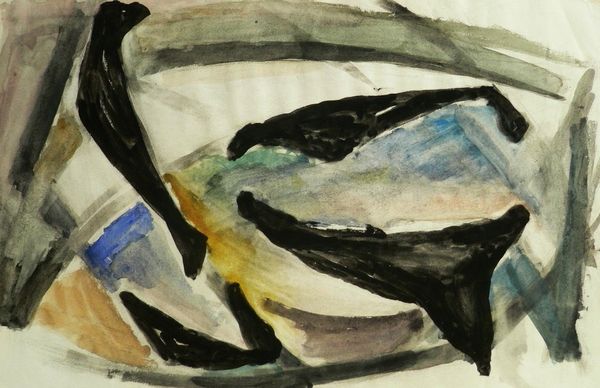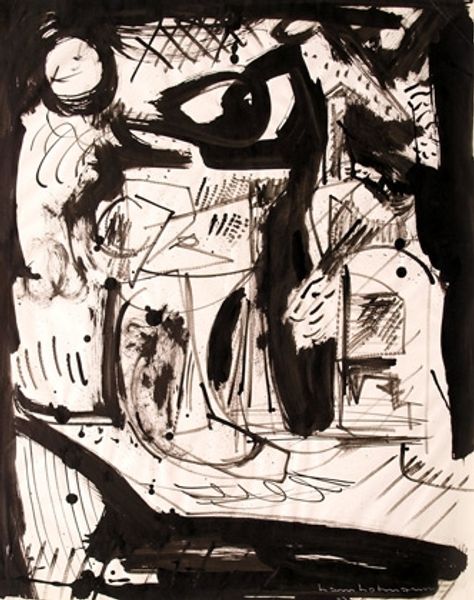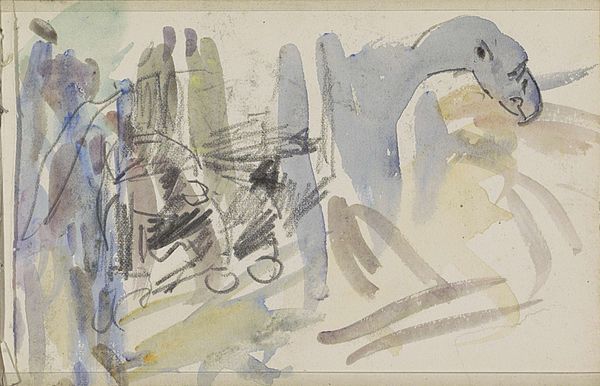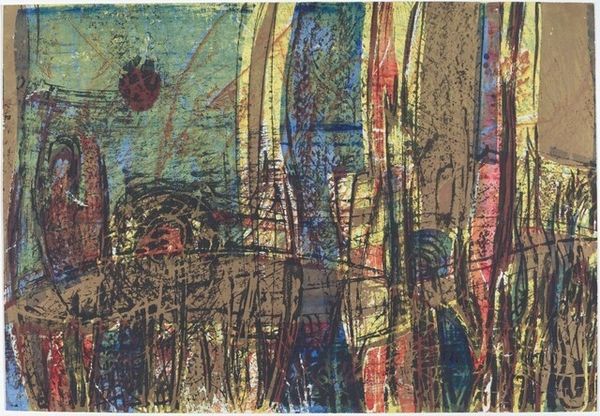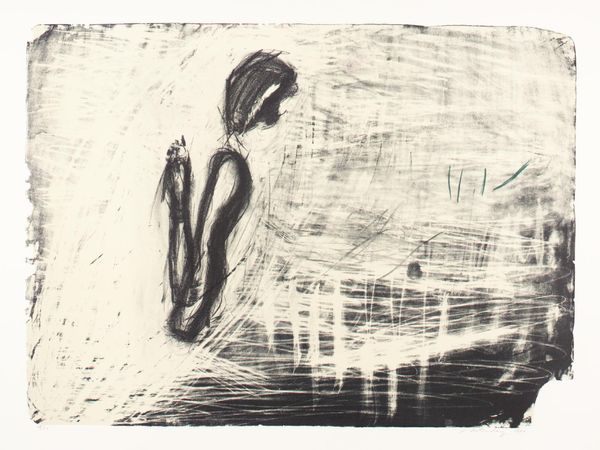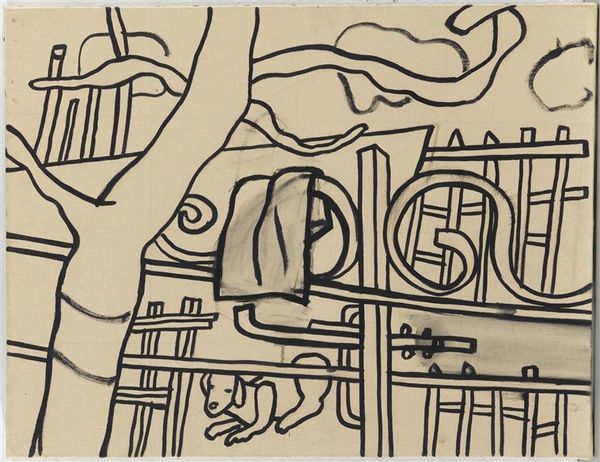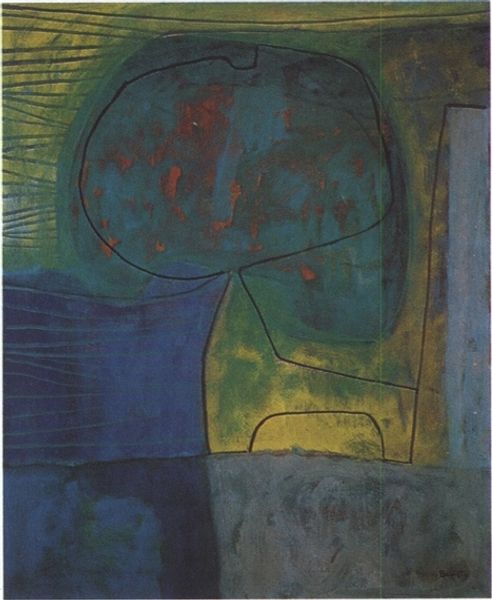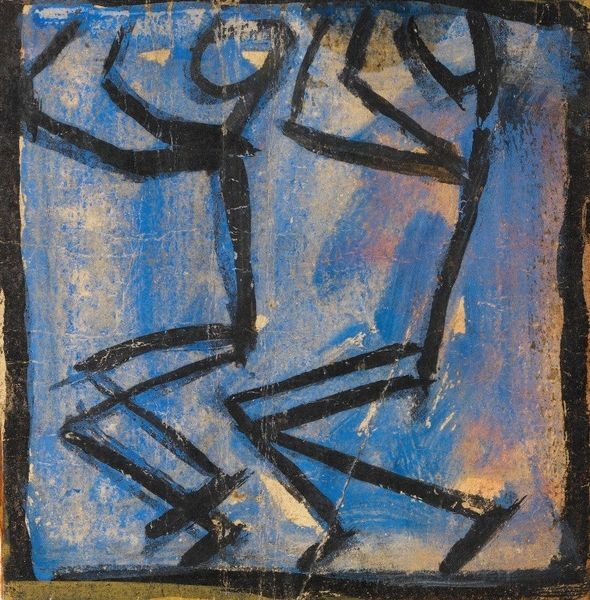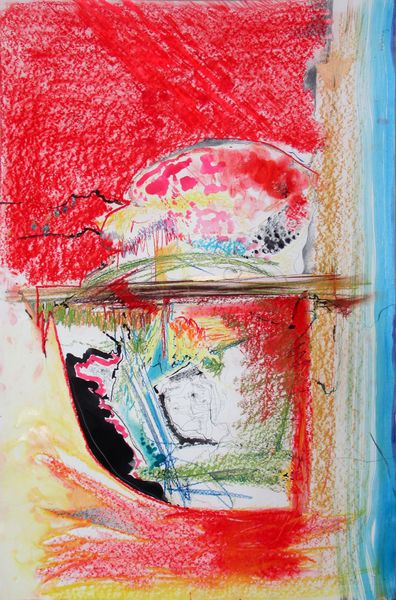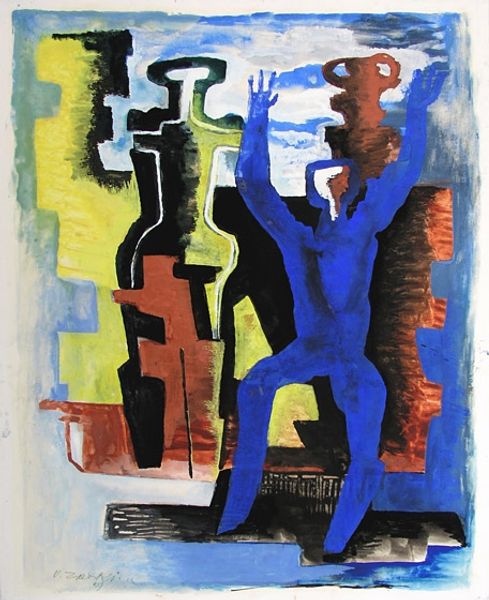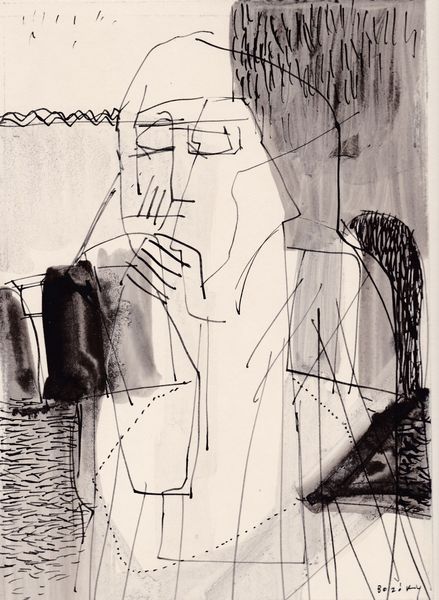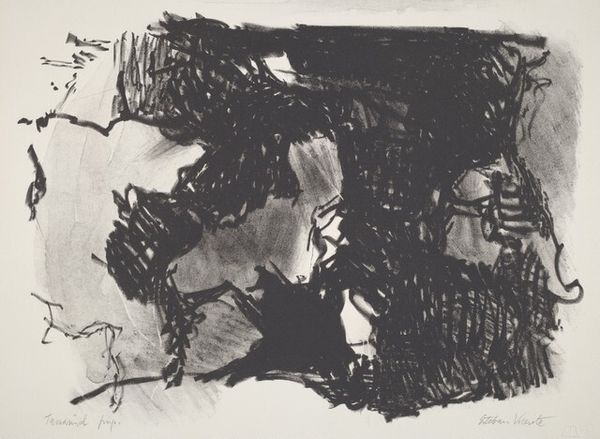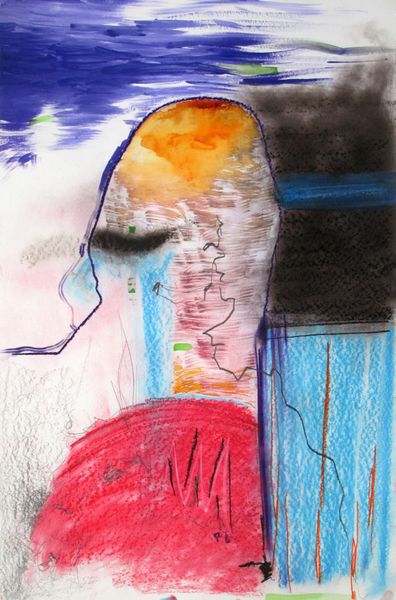
watercolor
#
portrait
#
abstract-expressionism
#
abstract expressionism
#
figuration
#
watercolor
#
abstraction
#
watercolor
Copyright: Aurel Cojan,Fair Use
Editor: This watercolor by Aurel Cojan, simply titled "Abstraction," was created in 1965. It’s hard to ignore the figure in the foreground; it reminds me a bit of a deconstructed portrait, almost unsettling. What do you see in this piece? Curator: I see layers of memory, filtered through a uniquely personal lens. Look at how Cojan uses watercolor, allowing the colors to bleed and merge. This technique mirrors how memories themselves can become blurred and indistinct over time, acquiring new emotional hues. The almost ghostly figures evoke the past and its persistent influence. Editor: So the blurred quality isn't just about the technique, but also represents the distortion of memory? Curator: Precisely! The recurring motif of the human figure suggests a persistent engagement with identity, but it's an identity constantly being questioned and redefined. The limited palette evokes a somber, perhaps reflective, mood. It calls to mind certain iconographic conventions of mourning. Editor: I hadn’t considered the somber quality of the palette contributing to that feeling of loss and reflection. Are the distorted figures then meant to symbolize something specific? Curator: Perhaps less about a specific symbolism, and more about capturing a psychological state. Cojan is inviting us to confront the fluidity of perception, how what we think we know can shift and morph. How our understanding of the figure in art is a sign for humanity itself. Editor: This makes me think about how we reconstruct narratives around images… How even abstraction contains traces of these stories. Curator: And those stories in turn, shape us. Every mark, every blotch, contributes to a powerful testament about the resilience of cultural memory. Editor: I’ll never look at watercolor the same way again! Thank you.
Comments
No comments
Be the first to comment and join the conversation on the ultimate creative platform.
